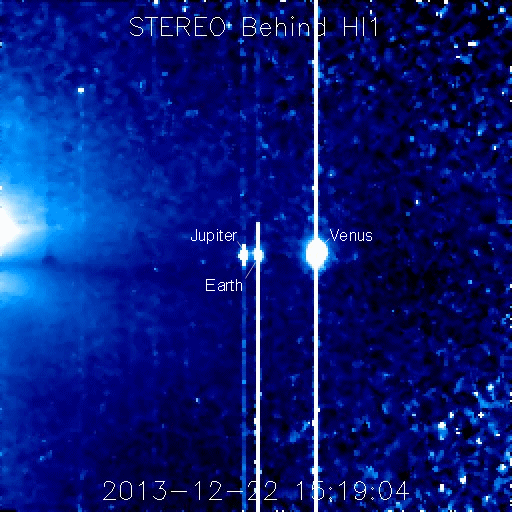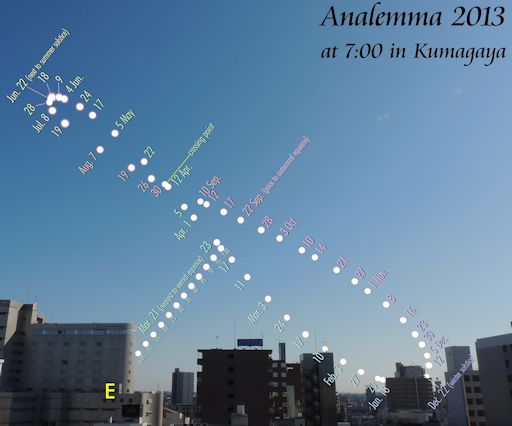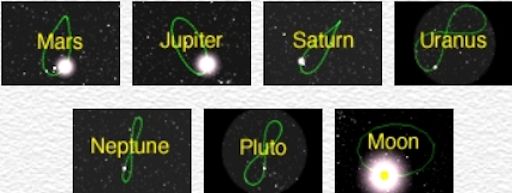When is the best time to see auroras? Where is the best place to go? And how do you photograph them? These questions and more are answered in a new book, Northern Lights - a Guide, by Pal Brekke & Fredrik Broms. | | |
URSID METEOR SHOWER: Earth is passing through a stream of debris from Comet 8P/Tuttle, source of the annual Ursid meteor shower. Forecasters expect the shower to peak on Dec. 22nd with as many as 10 meteors per hour streaming from a radiant near Polaris, the North Star. Occasionally, Earth hits a denser-than-usual patch of debris and rates increase 5- to 10-fold. However, no one can predict when these outbursts occur. Listen for Ursid echoes on Space Weather Radio. Meteor alerts: text, voice
CHRISTMAS CONJUNCTION: According to some scholars, the Star of Bethlehem might have been a close encounter between Venus and Jupiter. The two brightest planets in the night sky, merged, would have made a spectacle of Biblical proportions. This Christmas, NASA's STEREO-B probe is observing a conjunction of three planets--Venus, Earth and Jupiter:

Unlike conjunctions of the distant past, this one includes our home planet. STEREO-B is located on the far side of the sun where it can look back and see Earth along with other worlds in the Solar System. Only NASA's twin STEREO probes, equipped with their high dynamic-range Heliospheric Imagers, can witness this kind of conjunction.
From STEREO-B's point of view, Earth and Jupiter are less than 0.5 degrees apart, while all three planets fit in a circle 3 degrees in diameter. This meeting is not nearly as tight as the putative Star of Bethlehem conjunction ~2000 years ago. At that time Venus and Jupiter could have been as little as 6 arcseconds (0.00166 degrees) apart. Nevertheless, the ongoing conjunction is still a beauty. Stay tuned for updates as the three planets converge.
Realtime Space Weather Photo Gallery
ANALEMMA 2013: If you took a picture of the sun at the same time each day, would it remain in the same position? The answer is no, and the figure-8 shape traced out by the sun over the course of a year is called an analemma.
Japanese photographer "Shiraishi" stitched together more than 50 pictures spanning 12 months to reveal the analemma of 2013 over the city of Kumagaya-shi in Saitama, Japan:

"My analemma project started on December solstice in 2012 and finished on December solstice in 2013," says Shiraishi. "This photo contains the sun images from Jan. 18 to Dec. 22, that is, all the sun images are only in 2013."
The upper and lower tips of the "8" represent the solstices--the longest and shortest days of the year. Today the Japanese sun is at the bottom. Winter has arrived!
Other planets have analemmas, too. Not all are figure-8s, however. The shape depends on the tilt of the planet's spin axis and the eccentricity of its orbit around the sun. Martian analemmas resemble a teardrop, while Jupiter's analemma looks like a jelly-bean:

courtesy: analemma.com
Click here and scroll down to learn more about alien analemmas.
Realtime Space Weather Photo Gallery
Realtime Aurora Photo Gallery
Realtime Comet Photo Gallery
Every night, a network of NASA all-sky cameras scans the skies above the United States for meteoritic fireballs. Automated software maintained by NASA's Meteoroid Environment Office calculates their orbits, velocity, penetration depth in Earth's atmosphere and many other characteristics. Daily results are presented here on Spaceweather.com.
On Dec. 22, 2013, the network reported 24 fireballs.
(24 sporadics)

In this diagram of the inner solar system, all of the fireball orbits intersect at a single point--Earth. The orbits are color-coded by velocity, from slow (red) to fast (blue). [Larger image] [movies]
Potentially Hazardous Asteroids (
PHAs) are space rocks larger than approximately 100m that can come closer to Earth than 0.05 AU. None of the known PHAs is on a collision course with our planet, although astronomers are finding
new ones all the time.
On December 22, 2013 there were 1446 potentially hazardous asteroids.
Notes: LD means "Lunar Distance." 1 LD = 384,401 km, the distance between Earth and the Moon. 1 LD also equals 0.00256 AU. MAG is the visual magnitude of the asteroid on the date of closest approach. | | The official U.S. government space weather bureau |
| | The first place to look for information about sundogs, pillars, rainbows and related phenomena. |
| | Researchers call it a "Hubble for the sun." SDO is the most advanced solar observatory ever. |
| | 3D views of the sun from NASA's Solar and Terrestrial Relations Observatory |
| | Realtime and archival images of the Sun from SOHO. |
| | from the NOAA Space Environment Center |
| | the underlying science of space weather |

